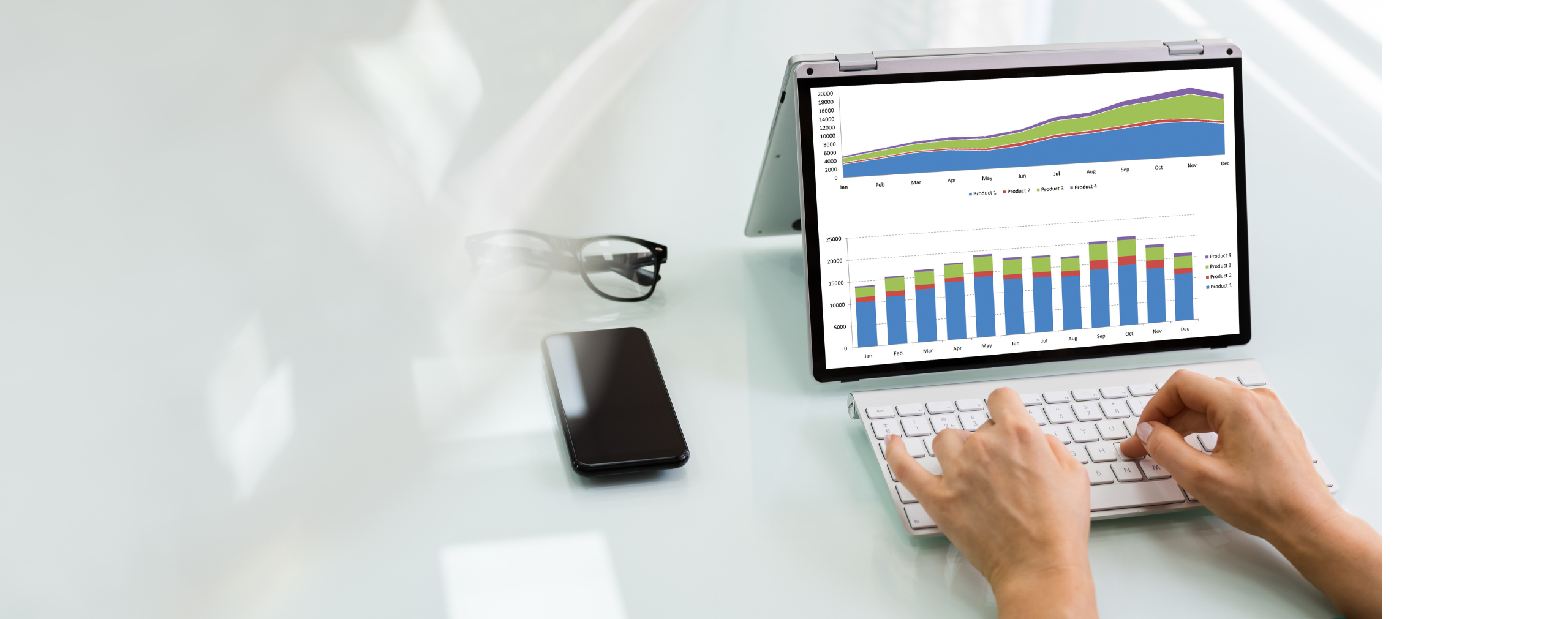
The Power of Financial Dashboards in Financial Management
Aug 27, 2024.Alderton BhudiaThe ability to swiftly and accurately assess financial metrics is crucial for making informed decisions. Whether you are managing personal finances, overseeing a small business, or handling the financial affairs of a large corporation, having a clear and concise overview of your financial health is essential. Financial dashboards provide this clarity by offering a visual and interactive representation of financial data. This blog post delves into the importance of financial dashboards, their key components, and how they can enhance financial management and decision-making.
What is a Financial Dashboard?
A financial dashboard is an advanced tool designed to offer a visual representation of key financial metrics and data points. It provides an at-a-glance view of an organization’s or individual’s financial status, making it easier for stakeholders to quickly assess performance, identify trends, and make informed decisions. Financial dashboards can be customized to display a wide range of financial data, including:
- Income and Revenue: Total earnings from various sources.
- Expenses: Outflows of money across different categories.
- Cash Flow: Net movement of cash in and out of the business.
- Profitability Metrics: Indicators of financial health such as profit margins and return on investment.
- Key Performance Indicators (KPIs): Specific metrics aligned with financial goals.
The Importance of Financial Dashboards
Real-Time Insights
One of the most significant advantages of financial dashboards is their ability to provide real-time insights. In a dynamic business environment, having access to up-to-date financial data is crucial for timely decision-making. Dashboards pull data from various sources, such as accounting software and bank accounts, and present it in a consolidated format. This immediacy enables stakeholders to react quickly to emerging trends and issues.
Data Visualization
Raw financial data can be overwhelming and difficult to interpret. Financial dashboards utilize charts, graphs, and other visual elements to present data in an accessible and understandable manner. This visualization facilitates:
- Trend Identification: Spotting patterns and shifts in financial performance.
- Anomaly Detection: Recognizing unusual deviations that may require investigation.
- Overall Financial Understanding: Grasping the financial status at a glance without sifting through spreadsheets or reports.
Enhanced Decision-Making
By consolidating critical financial information in one place, dashboards enable more effective decision-making. Whether determining the optimal time to invest in new projects, adjusting pricing strategies, or managing cash flow, dashboards provide the necessary insights to guide these decisions. For instance, real-time cash flow data can help a business decide whether it has enough liquidity to undertake a new investment.
Improved Financial Planning
Financial dashboards play a vital role in both monitoring current performance and planning for the future. By analyzing historical data and forecasting future trends, businesses and individuals can:
- Set Realistic Financial Goals: Based on past performance and projected trends.
- Create Actionable Plans: Develop strategies to achieve financial objectives, such as expanding operations or reducing costs.
Key Components of a Financial Dashboard
A well-designed financial dashboard should include several key components to provide a comprehensive overview of financial health:
Income and Expenses
This section tracks revenue and expenditures, offering insights into financial performance. Key features include:
- Revenue Streams: Breakdown of income sources.
- Expense Categories: Detailed tracking of spending to identify potential cost-saving opportunities.
Cash Flow
Cash flow is essential for maintaining operational liquidity. The cash flow section of a dashboard helps monitor:
- Cash Inflows: Revenue and other sources of incoming cash.
- Cash Outflows: Expenses, investments, and other cash disbursements.
- Net Cash Flow: The difference between inflows and outflows, indicating overall liquidity.
Profitability Metrics
These metrics assess how effectively a business generates profit. Common profitability metrics include:
- Gross Profit Margin: The percentage of revenue that exceeds the cost of goods sold.
- Net Profit Margin: The percentage of revenue remaining after all expenses have been deducted.
- Return on Investment (ROI): Measures the profitability of investments relative to their cost.
Key Performance Indicators (KPIs)
KPIs are tailored metrics that align with specific financial goals. Examples include:
- Customer Acquisition Cost (CAC): The cost associated with acquiring a new customer.
- Average Transaction Value (ATV): The average amount of money spent per transaction.
- Debt-to-Equity Ratio: The ratio of a company’s total debt to its shareholders’ equity.
Budget vs. Actual
Comparing budgeted figures with actual performance is crucial for financial oversight. This component helps:
- Identify Variances: Spot differences between planned and actual financial outcomes.
- Adjust Financial Plans: Make necessary changes to improve financial performance based on variances.
Choosing the Right Financial Dashboard
The effectiveness of a financial dashboard depends on its design and the accuracy of the data it presents. Consider the following factors when choosing or creating a financial dashboard:
Customization
Different businesses and individuals have unique financial needs. Select a dashboard that can be customized to display the most relevant data and metrics for your specific requirements.
Ease of Use
The dashboard should have an intuitive interface that is easy to navigate and interpret. Complex or cluttered dashboards can hinder decision-making rather than facilitate it.
Integration
Ensure that the dashboard integrates seamlessly with existing financial systems and data sources. This integration allows for real-time data aggregation and reduces the risk of errors.
Security
Given the sensitivity of financial data, choose a dashboard with robust security features. Data encryption, access controls, and regular security updates are essential for protecting financial information.
Conclusion
In today’s data-driven world, financial dashboards are indispensable tools for effective financial management. They offer real-time insights, enhance decision-making, and support strategic financial planning. Whether you are managing personal finances or overseeing a large business, a well-designed financial dashboard can help you stay informed about your financial health and make more informed decisions. By leveraging the power of financial dashboards, you can navigate the complexities of finance with greater confidence and achieve your financial goals.

Ready to look after your business?
Let us handle your finances so you can focus on growing your business. Our expert team offers tailored accounting, taxation, and advisory services to ensure your success. Partner with us today for peace of mind.
Contact Us